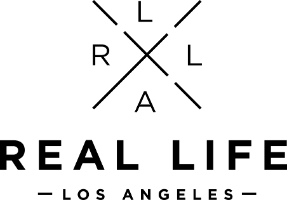Newsprint Technology
ELIMINATING END ROLLS LOS ANGELES TIMES
By Karen Doss Bowman
Machinist Noel Trevino and Roller Crew Specialist Ron Williams couldn’t help noticing the large number of newsprint butt roll ends that were collecting in their workspace at the Los Angeles Times’ Olympic plant. While taking a break on the building’s terrace last summer, the two discussed how to combine the smaller end rolls into one large roll using equipment the company already owned.
“When you’re in the pressroom and see a problem, if you have an idea [to solve it], then try it,” Williams says. “[Noel and I] put our minds together. Within a half hour, we had a solution.”
Eliminating end rolls in the pressroom feels like a full-time job, says Russ Newton, the Times’ senior vice president of operations, who nominated Trevino and Williams for the I.O. Award.
Before the two developed their plan for combining smaller end rolls, it was not unusual to find more than 50 end rolls, each containing less than 12 inches of newsprint, in the Times pressroom. At this size, they are too small for the paper’s Goss Colorliner presses to paste onto a new roll automatically, Newton explains, so they often are left sitting until they become too damaged to use.
Williams and Trevino created a splicer using two reelstands—without spending a dime. First they loaded a small end roll in the normal running position on the Colorliner’s Reel-Tension-Paster unit and ran the web over to a second RTP unit. Next, they spliced that end roll to a second end roll, which was loaded in the reverse position in the second unit.
Putting the second unit’s drive belts in reverse, they wound the roll from the first unit onto the roll in the second unit, creating a single, large roll. The process has been fine-tuned and, Trevino says, they now can consolidate about 25 end rolls into one larger roll of about 45 to 50 inches in diameter.
Though Newton hasn’t collected hard data on actual savings, he says it’s reasonable to assume significant savings in newsprint. Instead of ending up as recycled waste, the leftover newsprint—which, according to Newton, costs about $600 per metric ton—will be used to print the daily paper.
Robert Kotwasinski, vice president of production at The Arizona Republic in Phoenix and chairman of NAA’s Packaging and Distribution Committee, which helped to judge the I.O. Awards, says he was most intrigued by the creative thinking of Williams and Trevino, and their resourceful use of the existing equipment.
“It goes back to paying attention to the folks working in the pressrooms to come up with great ideas,” Kotwasinski says. “[It’s about] just listening to your employees who use the equipment all the time. They might come up with ways to make the job easier or to save you money.”







4 comments:
OC had a whole system dedicated to splicing rolls. It got chucked years ago just as most good ideas do at this company.
Some of us remember the old rewinder in Times Mirror Square.Thosr rewinds didnt work to well back then.we also made paper towels out of the stubs.I quess most wont remember the early eighties.
How about the "early seventies" in the Square!
There was a re-winder that was tried at Olympic but all of them failed because of "rolls per break" (RPB)on the rewound rolls. I wonder what the RPB will be on the "new" rewound rolls. I wonder if anyone is keeping track?
We have many times recommended that the we bring back the rewinder we had at OC, but mangement said it was not cost effective.
Post a Comment